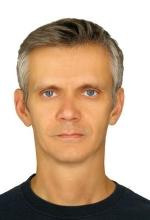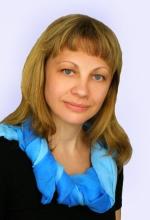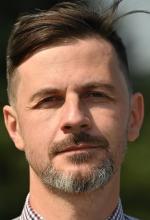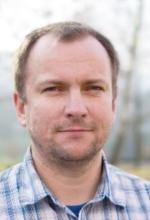Bioinformatics 10 2023
The main goal of the "Bioinformatics" course is to prepare students and postgraduates to work with large data sets related to DNA analysis or mass spectroscopy. It will be especially useful for students who plan to change higher education institutions when entering a master's or postgraduate program.
The bioinformatics course was organized by the Explogen LLC company and with the participation of experts from the Ivan Franko National University of Lviv. Therefore, there will be an opportunity to communicate with people who are making money with their knowledge and skills in genome sequencing and analysis.
The course is designed for undergraduate, master’s, and postgraduate students of biological specialties (regardless of the course of study and institution of higher education). The maximum number of participants is 40. If there are more interested people, we will offer free participation in the lectures (without awarding a certificate).
The duration of the course is 6 weeks (from 02.10.2023 to 10.11.2023), 30 hours (1 ECTS credit). Classes (lectures and practical/seminars) will be held online at times that do not overlap with students' main studies at universities.
Credits for the course can be credited to the main place of study. To date, confirmation letters on the approval of course credits for undergraduate students of biological specialties have been received from five universities: Kherson State University, Odesa Mechnikov National University, Vasyl Stefanyk Precarpathian National University, Oles Honchar Dnipro National University, and Karazin Kharkiv National University, Ivan Franko National University of Lviv, National University of Food Technologies, Dnipro State Medical University, National University of Kyiv-Mohyla Academy, Kyiv Academic University
Registration: from 20.08.2023 to 20.09.2023
If there are more applications than the grant program (maximum 40), then in the official registration, priority will be given to students and postgraduates of partner universities and students who have suffered greatly due to the war and have not yet completed the relevant courses.
Scholarship: 18 scholarships of 200 euros. If there are more applicants for the scholarship, priority will be given to students who lived in areas close to hostilities and who had to move to another region of Ukraine. It is also important whether students have taken part in the offered courses. Successful completion of the exam is assumed after completion of the course.
The bioinformatics course consists of three blocks - the basics of analysis of DNA and protein sequences, phylogenetics, and human medical genetics. The general goal of the course is to introduce students and listeners with the basics of biological data analysis, primarily DNA and protein sequences, approaches to their alignment; DNA sequencing methods and their application for various research tasks; basics of visualization and manipulations with genome sequences using genome browsers; basics of population genetics and phylogenetic analysis; and approaches and methods of human genomics and their application in the practice of medical genetics, which also includes ethical aspects of medical genetics. The course is designed for master's and postgraduate students with basic knowledge of genetics and molecular biology. The course is aimed at acquiring and deepening the existing practical skills of working with biological data and includes a series of seminars and practical classes with the execution of individual tasks using the methods and approaches discussed at the lectures.
The emergence of the term and the modern definition of bioinformatics. Pioneering works of Prof. Margaret Oakley Dayhoff. From gene to trait. Relationships between bioinformatics, computing and systems biology. Modern bioinformatics problems.
Bioinformatic databases - model of the National Center for Biotechnology Information (NCBI): PubMed; Taxonomy; GenBank; Genome; Gene Expression Omnibus (GEO) datasets. Specialized databases - on the example of PATRIC. The concept of a pairwise alignment, basic terms (coincidences, discrepancies, gaps). Homology of sequences. Methods for evaluation of pairwise alignments. Algorithms - dynamic programming (ACS) and heuristic (BLAST). Demonstration of the BLAST web service interface. Karlin-Altschul statistics and the Expectation number (E).
Progressive methods of multiple sequence alignment. New tools of multiple sequence alignment (T-COFFEE, MUSCLE, MSAProbs). Models based on a multiple sequence alignment – consensus sequence, position-specific score matrices (PSSM), Weblogo, Hidden Markov model (HMM). Main web services based on HMM (TMHMM, GeneMark, Pfam, HHPred).
Comparative description of scientific and clinical studies. Principles of EBM (evidence-based medicine). Types of clinical trials. What are Clinical Practice Guidelines, how to find and use them. The main sources of clinical data: NCBI Clinical Trials, Drugs.com Database, Medscape, Cochrane Library. Alternative open access Big Data sources.
Pattern of inheritance. Linkage analysis. Working with OMIM (An Online Catalog of Human Genes and Genetic Disorders). Molecular and gene therapy of monogenic diseases.
NGS workflow. Bioinformatics analysis of NGS data. Commonly used tools for NGS data analysis. Modern nomenclature of NGS results. Criteria for NGS interpretation, prediction algorithms and necessarily databases. Clinical application of NGS. Clinical cases presentation.
GWAS analysis. Genetics and environmental factors measurement. Genome-Wide Association Study (GWAS) - method description. GWAS catalog. Interpretation of genomic study; definition of absolute risk, relative risk, odds ratio. Examples of GWAS success (diabetes, hypertension, schizophrenia, cancer). Genome study value in clinical practice.
Origin of genetic variation and basic concepts of evolutionary biology and molecular evolution. Evolutionary forces, fate of alleles in the population.
Wondering in the space of genotypes.
Phylogenetic trees: nomenclature, tree-thinking, editing and format conversion. Three main approaches to the evolutionary history reconstruction. Distance based methods, Likelihood methods and Bayesian inference phylogenetic reconstructions. Substitution models. Multilocus analysis of phylogenies, coalescent methods.
Phylogeny as a backbone and null model of evolutionary biology. Population history, demography and selection. Method of phylogenetics contrasts. Test for selection. Fst outliers. Challenges and limitations of whole genome based phylogenetic reconstruction. Genotyping by sequencing and artificial data downscaling. DdRAD sequencing.





